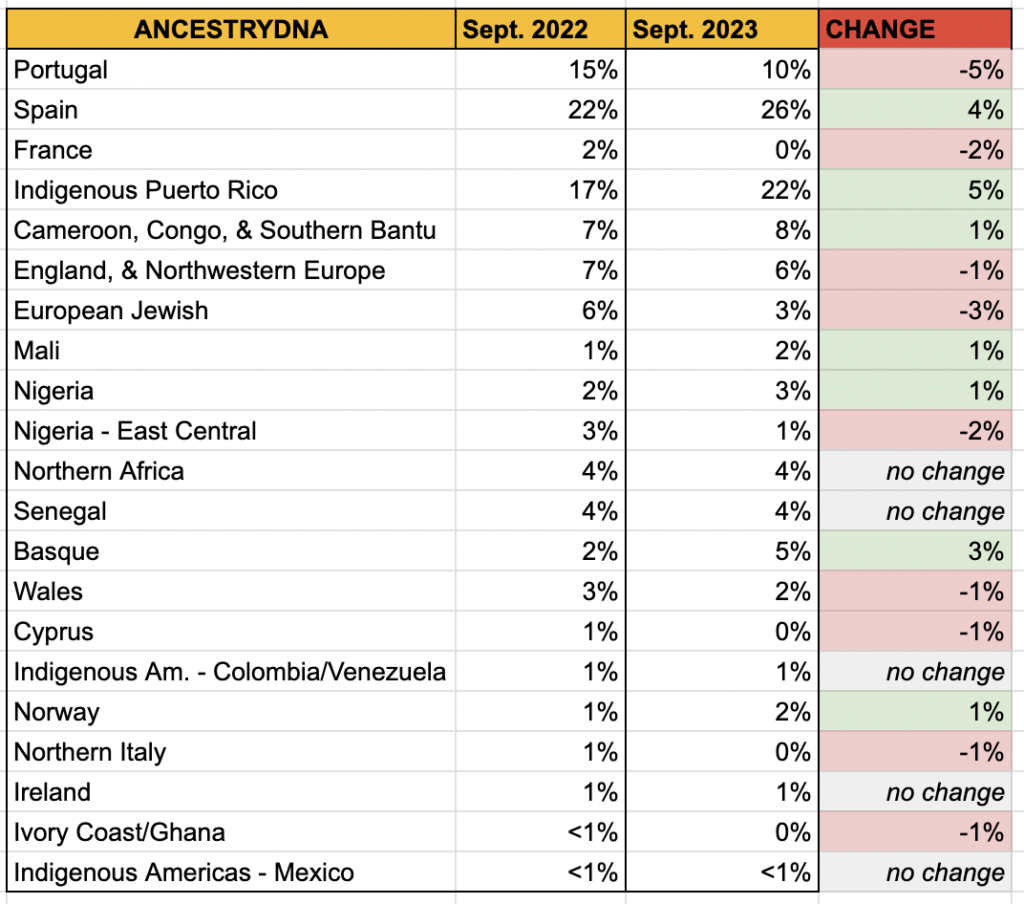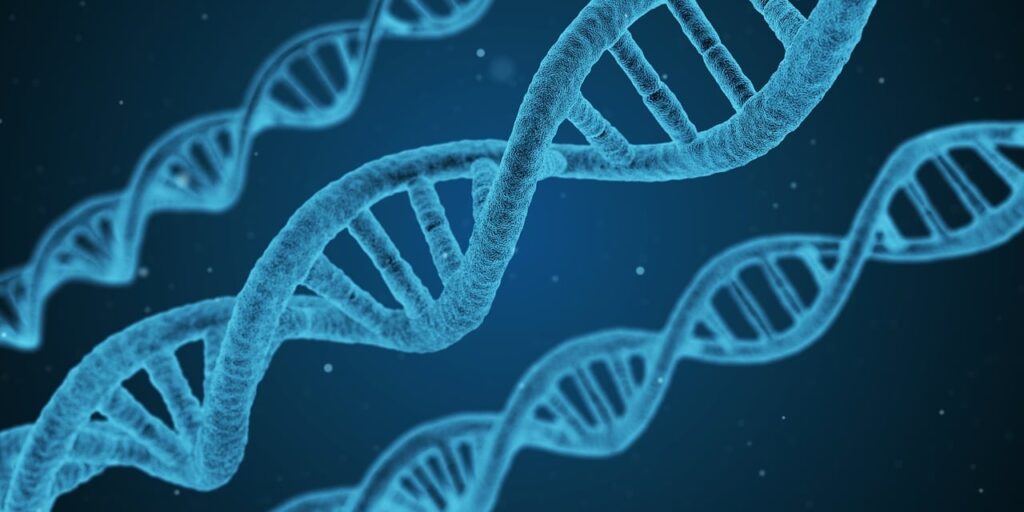I can not believe that this is already my second to last post for 2023! The year has sped by again (… when doesn’t it?) and I soon wrap my genealogical year with a review of my goals and a genealogical look into 2024. However, to end 2023 I want to focus on one of the recent AncestryDNA genetic updates that came with this year.
I want to compare percentages that have changed and see what this means genetically for me from a Puerto Rican perspective. In my opinion, AncestryDNA tends to fluctuate quite a bit depending on the update, which populations were added, etc. and so I always take these updates with a grain of salt. Nonetheless, it is important to follow up with the updates as AncestryDNA becomes more specific with their analysis.
So here we go!
AncestryDNA Update

Above we can see a comparison between last year’s update in September 2022 and this year’s update in September 2023. Looking at the percentages we can see that some went up, while others went down, and some experienced no change.
Generally, the percentages changed by about 1-3%; however, there were some that changed as much as 5% – specifically Portuguese and Indigenous Puerto Rico.
Similarly, Spain gained 4% (likely some from that -5% from Portugal), my European Jewish went down 3%, and my Basque percentage went up 3%.
Those that had no changes were Northern Africa (4%), Senegal (4%), Indigenous Americas – Colombia/Venezuela (1%), Ireland (1%), and Indigenous Americas – Mexico (<1%). However, with such small percentages at 1%, I consider these segments noise, probably tied to my other African regions and indigenous Puerto Rico DNA, respectively.
DNA Credibility?
I definitely think AncestryDNA is working its way to a more accurate reading of at least my DNA. Before 2022, my western Europe percentages were: Portugal (27%), Spain (14%), and France (12%). Knowingly my family history and knowing that I A) have no Portuguese ancestors in the last 300 years and similarly B) no ancestors from near Portugal, it was surprising to receive such a high amount – higher than even Spanish!
Some people argue that this DNA is from Portuguese settlement in the Canary Islands, border regions such as Galicia or Extremadura, and/or DNA that made its way to Puerto Rico from actual Portuguese immigrants. However, with my genealogy this personally did not match what I knew on paper and so I never paid attention to those percentages. Granted, I do know that I have ancestry from the French Caribbean, but again, this ancestry is mostly tied to Afro enslaved roots and so far I have no ancestor from France on those lines – so 12% also seemed too high. Again, there are those that argue that these percentages could come from eastern bordering areas of Spain closer to France.
Fast forward to September 2023, my western Europe percentages for these countries are now at 10% (Portugal), 26% (Spain), and 0% (France). These percentages seem to be more in line with what I know about my family’s roots with 10% still being high but beggars can’t be choosers sometimes. Also, it is possible that I have some French DNA somewhere further in my tree, seeing as how it is likely that my side from Guadeloupe was mixed given my 5th great-grandfather’s Y-DNA line was European, but we are talking about ancestors in the realm of 6th-7th great-grandparents and thus it is also possible that I simply did not inherit any of those genes genetically given their distance from me.
Taking a look below, you can see that anything before your 4th great-grandparents would be a slim possibility of inheritance given that you receive on average 1.56% of DNA from them already six generations back (and sometimes less). Therefore, I do not expect any French DNA if there is any further back in my family tree.
Blaine Bettinger once said in his webinar titled “Reconstructing Your Genetic Family Tree” that we have two trees: our paper tree and our genetic tree.
One tree you gain by researching your ancestors via your paper trail, using documents to climb further up your tree (paper tree), while your other tree you gain by taking a DNA test (genetic tree). They do and should overlap of course, but they are not 1:1. It is also important to keep in mind potential things such as NPE (Non-Paternity Events), endogamy/consanguinity, etc.
So for example, I potentially could have French DNA on my paper tree but then none on my genetic tree.

Conclusions
Though nothing groundbreaking has been revealed with this new update, I am grateful to still be receiving them and hopeful that these results will become more specific/correct in the future and that they will help me connect with more genetic cousins.
Equally, I keep track of other members of my family who have tested with AncestryDNA such as my parents, two maternal grandparents, and one paternal great-aunt in order to learn more about my inherited DNA across various generations. I am hopeful that one day AncestryDNA will assign my maternal grandfather a genetic community with the French Caribbean, for example!
Always excited with the development of DNA and the power it has given us genealogists to further explore!

